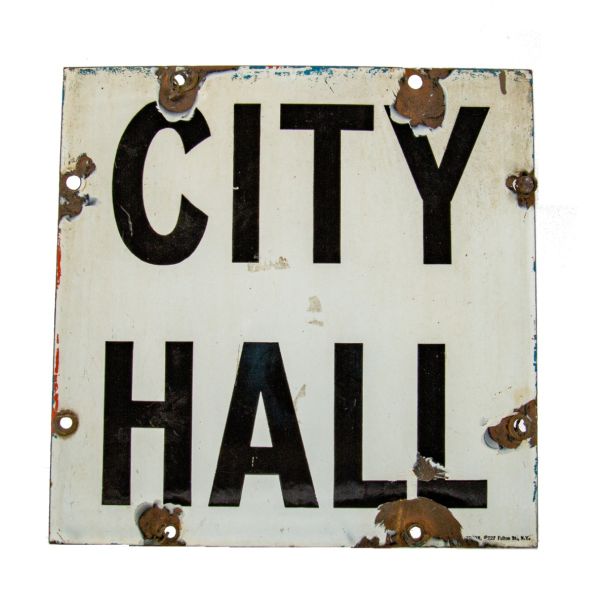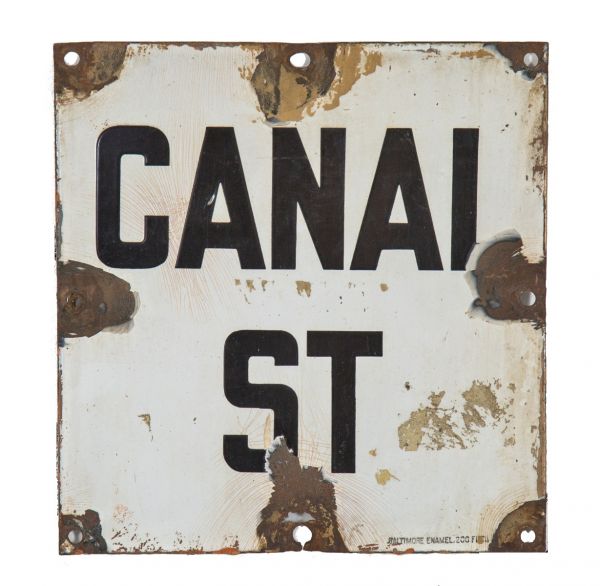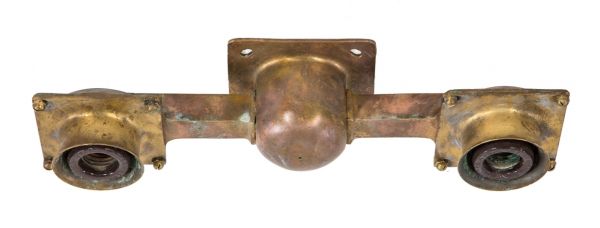c. 1930's american industrial single-sided new york subway city hall station flush mount porcelain enameled column sign
SOLD
Out of stock
SKU
UR-33336-21
rare american depression era new york city subway single-sided flush mount support column destination sign salvaged from the city hall station. the single-sided sign is comprised of die cut steel with original white and black porcelain enameled finish largely intact. the column sign was fabricated by the baltimore enamel & novelty co., baltimore, md. the very first signs to appear in the new york city subway system were intricately designed mosaic tile station names on platform walls created by heins & lafarge around 1904. in 1918 vickers commissioned the use of porcelain enamel signs from both the nelke-porcelain metals sign co. and the baltimore enamel company, which continued to make enameled subway signs throughout the 1930′s. the directional and informational signs typically hung from the ceiling or were mounted on the tiled walls. directional signs included those on the outside of the station entrances as well as those intended for the corridors and platforms underground. many of the informational signs warned against criminal, dangerous or unhealthy behavior: no peddling wares, no leaning over the tracks, no crossing the tracks, no smoking, no spitting. city hall was the original southern terminal station of the first line of the new york city subway, built by the interborough rapid transit company (irt), named the "manhattan main line", and now part of the . irt lexington avenue line. opened on october 27, 1904, this station underneath the public area in front of city hall was designed to be the showpiece of the new subway. the station was designed by rafael guastavino. the main consulting architects on the irt stations were george lewis heins and christopher grant lafarge for the company heins & lafarge. The station is unusually elegant in architectural style, and is unique among the original irt stations, employing romanesque revival architecture. the platform and mezzanine feature guastavino tile, skylights, colored glass tilework and brass chandeliers. in the years after the line's construction, increased subway ridership led to longer trains, and thus longer platforms, in the 1940’s and early 1950’s. city hall station, built on a tight curve, would have been difficult to lengthen, and it was also quite close to the far busier brooklyn bridge station. city hall, notwithstanding its architectural grandeur, was never an important station. in its final year of use, it served only 600 passengers per day and was not open at nights (when trains continued to the loop station at south ferry). the brooklyn bridge station, located a short walk away, at the opposite end of city hall park, was more popular, as it provided both local and express service, including trains to brooklyn. given the extensive renovations that would have been required to bring the station up to modern standards, the city decided to close it instead. the final day of service was december 31, 1945.
WORDLWIDE SHIPPING
If required, please contact an Urban Remains sales associate.
NEW PRODUCTS DAILY
Check back daily as we are constantly adding new products.
PREMIUM SUPPORT
We're here to help answer any question. Contact us anytime!
SALES & PROMOTIONS
Join our newsletter to get the latest information




























